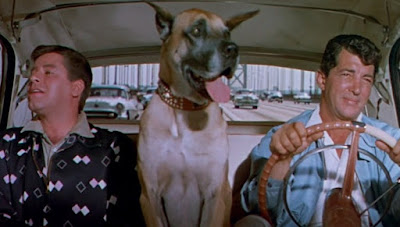Benji Kaplan (Kieran Culkin) is a real pain. A perpetual stoner who tends to dress in whatever he woke up wearing, he’s as endearing as he is obnoxious, able to charm you even as he’s cutting in line right in front of you. He is the exact opposite, in other words, of his uptight cousin David (Jesse Eisenberg) whom we repeatedly see in two shots with Benji, agonizing, squirming, virtually dying before our very eyes every time Benji blows by the social contract. So, it only makes sense that Eisenberg, working in his simultaneous capacity as writer and director, follows the map set by storytellers immemorial and puts these two on the road together, like a Gen Y Del Griffith and Neal Page in “Planes, Trains and Automobiles.” Rather than trying to get home, however, Benji and David are going to their ancestral home of Poland, where their recently deceased grandmother lived and then fled after surviving the camps during WWII, as part of a small Jewish heritage tour group.

That’s the real pain, in other words, Benji and David’s generational trauma and lingering grief, evoking the movie’s myriad double meanings. The notion of happiness and sadness co-existing, of how someone can be happy when there is so much sadness in the world, of why go around being sad when there is so much to happy about it, is not new, of course, but it is nevertheless remarkable how Eisenberg the writer buries these dueling notions into virtually every aspect of his witty script. Funny moments turn serious in a blink, and vice-versa, which makes “A Real Pain” so enjoyable to watch even as it emotionally trucks you. In one scene, the group travels first class by train, leading Benji to note the irony, that they’re Jews on a train in Poland, retreating to coach in protest, eventually joined by his cousin. But David falls asleep, and they miss their stop, forcing them to hop
another train going the
other way without tickets as Benji bluffs their way past the ticket agent…and into first class. The moment both takes the piss out of Benji’s righteous meltdown, and underlines it, a sidesplitting triumph in the name of their ancestors.
In that same sequence, however, when Benji flips out on the rest of his tour group for wanting to ride in first class luxury, Eisenberg’s script elides the possibility of a thoughtful debate on the topic by essentially just turning the rest of the gang into mechanical opposition. It exposes these additional characters, despite solid performances by all the actors, as mostly a way to help frame Benji and David. Even the professional epiphany experienced by the tour guide, James (Will Sharpe), is as much about showing Benji in the unlikely role of spiritual sherpa. This is not necessarily a flaw. It evokes how Benji eats up all the space around him, and underlines how Eisenberg’s interest lies specifically in the cousin dynamic. And though you might sometimes want a clearer idea of what’s happening in Benji’s head, this is intentional rather than a narrative oversight, filtering Benji through David’s point-of-view. That is its own double meaning, in a way, as Eisenberg the director cedes the movie to Culkin, echoing how David can’t help but love Benji despite all he puts him through. These elements coalesce in David’s lovingly critical monologue about his cousin at dinner. It is Eisenberg’s biggest moment, the camera drifting in for a close-up, but also one that’s entirely about the character played by his co-star.
Moments like those are as much about the acting and the writing as the directing, but Eisenberg demonstrates real auteur chops too. During the group’s visit to Lublin, we see several simple shots of modern buildings, each one described by James in voiceover as one-time centerpieces of Jewish life, a plaintive evocation of how history is so often not just erased but trampled, taken and converted into something else. Eisenberg makes a trip to a Majdanek concentration camp come alive in a profound way by recounting the characters seeing a gas chamber in a series of shots where each of them walks into a close-up and turns toward the camera, almost as if they are lining up to take pictures at the DMV. Eventually taken in tandem with a reverse shot of the room itself, these stark images seem to open a portal across time, bringing them face-to-face with the unconscionable horror, if only for a second, unable to comprehend it even as they confront it.

Benji and David conclude their journey by breaking off from the tour group to visit their grandmother’s former home in Krasnystaw, as earnest a device for closure as it is contrived, as much for the characters themselves as the movie. Eisenberg, though, introduces this device to turn it on its head by drolly demonstrating how finality cannot be manufactured, and how the world indifferently moves on with or without us. Whether these two will eventually find closure, one cannot say, because “A Real Pain” deliberately leaves that question open-ended. I was stunned by how much the concluding shot made me think once again of “Planes, Trains and Automobiles” if Neal’s sudden awakening had never come and Del had been left sitting in that train station forever.























